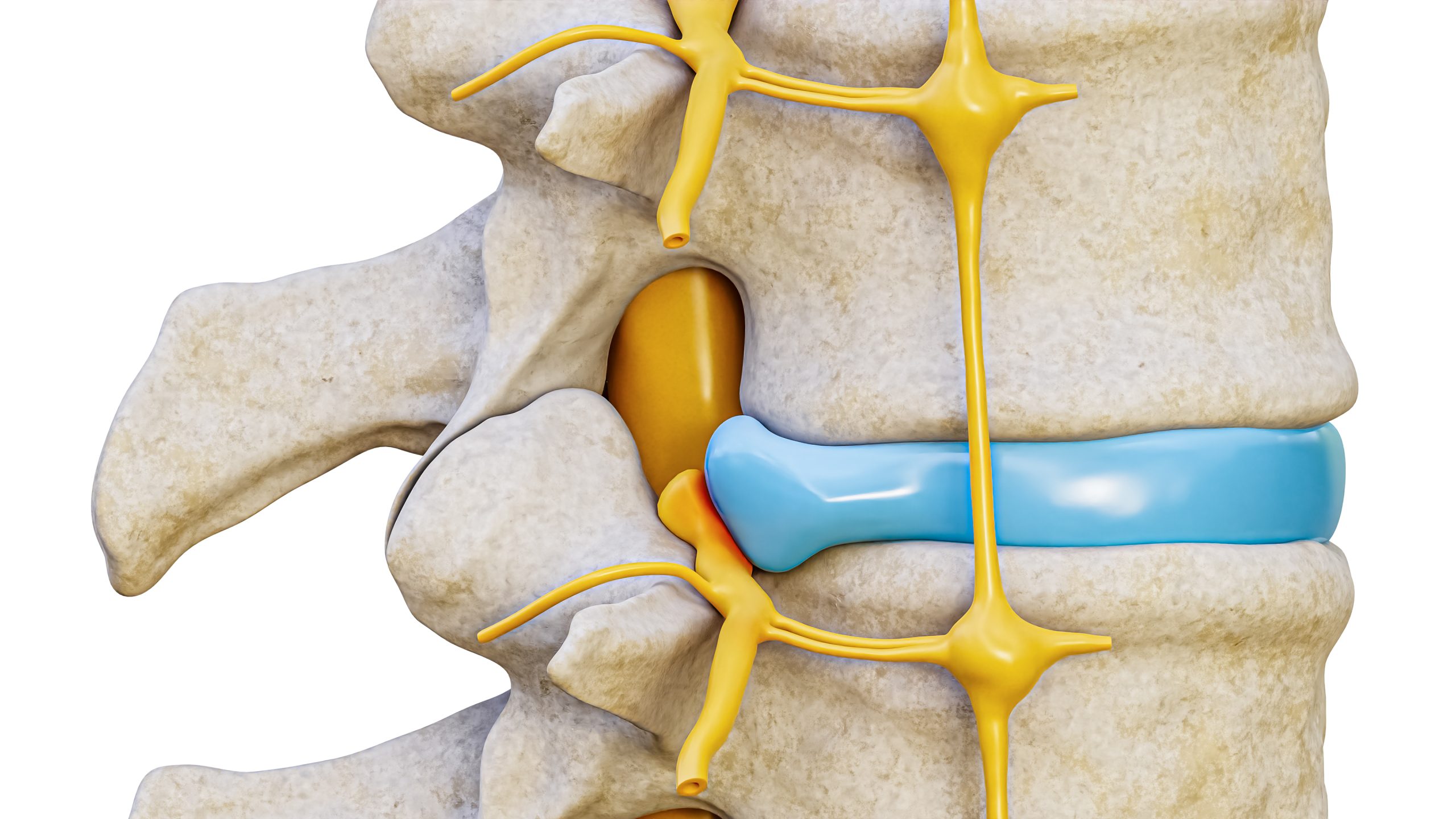Herniated Disc
A herniated disc occurs when the inner portion of a spinal disc protrudes through a tear in the outer layer of the spinal disc.
The spinal disc has two layers: the outer annulus fibrosus and the inner nucleus pulposus.
The annulus fibrosus comprises the outer portion, enclosing the jelly-like nucleus pulposus. The annulus fibrosus is made up of 22-25 layers of fibers that connect to the vertebrae above and below the disc.
The annulus fibrosus and nucleus pulposus distribute force and stress placed on the spine to prevent the vertebrae from rubbing against each other and ensure that nerves around the spine don’t become pinched or compressed.

When tears occur, the nucleus pulposus may press against nearby spinal nerves, causing painful symptoms. These tears in the spinal disc typically occur as a result of age-related degeneration, trauma, repetitive stress, and excessive pressure on the spine.
Common Symptoms
Treatment Options
Common Symptoms
Common Symptoms
The symptoms of a herniated disc vary depending on the severity of the herniation as well as the location of the affected disc. When herniated discs occur in the cervical spine, the neck will be affected. If they develop in the lumbar spine, the lower back will be affected. Symptoms of a herniated disc include:- Lower back or neck pain
- Sharp, shooting, or aching pain in the affected area
- Radiating pain, numbness, tingling, or weakness along the path of the affected nerve
- Sciatica pain
- Muscle weakness or loss of sensation in the affected area
- Loss of bowel or bladder control – this requires immediate medical attention
Treatment Options


